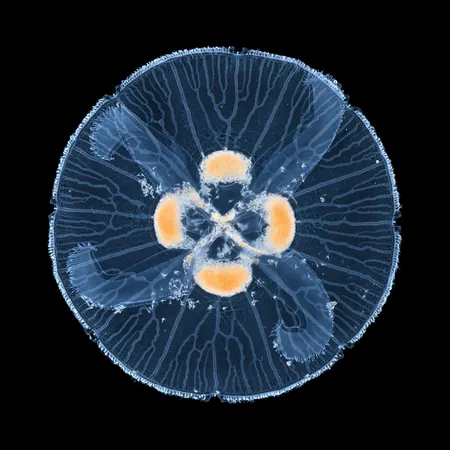
Unraveling Nature's Hidden Secrets: The Surprising Physics Behind Transport Networks
2024-09-27
An intriguing new study published in the esteemed *Proceedings of the National Academy of Sciences* reveals the fascinating dynamics behind the formation of loops in transport networks found in various natural systems. Led by an international team of researchers, the study emphasizes how these loops are not just random occurrences but rather crucial components that enhance the stability and functionality of these networks.
The researchers discovered that when one branch of a network approaches the boundary of its environment, a remarkable shift in the interactions among branches occurs. Previously repelling branches begin to attract each other, thereby facilitating the sudden emergence of loops. These findings highlight a process that can be observed across a diverse range of systems—ranging from the networks in electric discharge phenomena to the intricate canal systems of jellyfish like *Aurelia aurita*.
"Nature showcases a multitude of transport networks," explains Stanislaw Żukowski, a Ph.D. student from the University of Warsaw and lead author of the study. "These networks can exhibit tree-like geometries where branches merely split and repel each other, or they can develop looping structures where branches reconnect during growth."
One prominent example of looping networks is found in biological systems—like the network of blood vessels in our bodies, which efficiently transport oxygen and nutrients while also removing waste. These networks are less vulnerable to damage: the loss of a single branch in a tree-like network could disrupt the entire system, whereas looping networks provide alternative pathways for continued function.
The mechanism that contributes to the stability of existing loops was previously understood, but how these loops initially form had remained a mystery—until now. The research team, including physicists from the University of Warsaw and Laboratoire Matière et Systèmes Complexes, designed a model explaining that growth in transport networks often coincides with environmental fields, such as concentration gradients or pressure differentials. This phenomenon favors transport through branches rather than the surrounding medium, leading to intriguing dynamics.
For instance, lightning conductors can attract electrical discharges due to their lower resistance compared to the surrounding air. A small difference in resistance can instigate attraction among growing branches—a concept recently explored by Professor Piotr Szymczak and his team in Warsaw.
The pivotal breakthrough occurred when Żukowski observed the interesting dynamics of the jellyfish's gastrovascular network. "When one canal connects to the jellyfish's stomach, shorter canals are immediately drawn towards it, forming loops almost instantaneously," he noted. This loop formation is not an isolated incident; similar patterns have been identified in various experiments, including gypsum fracture studies and in scenarios featuring fluid instabilities.
The model proposed by the researchers illustrates how interactions between branches evolve as one approaches the edge of the system. The initial competition between branches transitions to attraction, leading to the formation of loops. Importantly, this process is predicted to happen regardless of the network's geometry or the differences in resistance between the network and its surrounding medium.
The implications of this research extend beyond theoretical understanding—anticipating that loop formation could be found in other systems that have not yet been explored. "We’re intrigued to discover more examples where loop formation occurs near system boundaries," Żukowski adds, hinting at potential applications in material science and biological engineering.
Stay tuned for more groundbreaking discoveries that reveal the hidden patterns of nature’s designs and their applications in technology and biology!



 Brasil (PT)
Brasil (PT)
 Canada (EN)
Canada (EN)
 Chile (ES)
Chile (ES)
 España (ES)
España (ES)
 France (FR)
France (FR)
 Hong Kong (EN)
Hong Kong (EN)
 Italia (IT)
Italia (IT)
 日本 (JA)
日本 (JA)
 Magyarország (HU)
Magyarország (HU)
 Norge (NO)
Norge (NO)
 Polska (PL)
Polska (PL)
 Schweiz (DE)
Schweiz (DE)
 Singapore (EN)
Singapore (EN)
 Sverige (SV)
Sverige (SV)
 Suomi (FI)
Suomi (FI)
 Türkiye (TR)
Türkiye (TR)